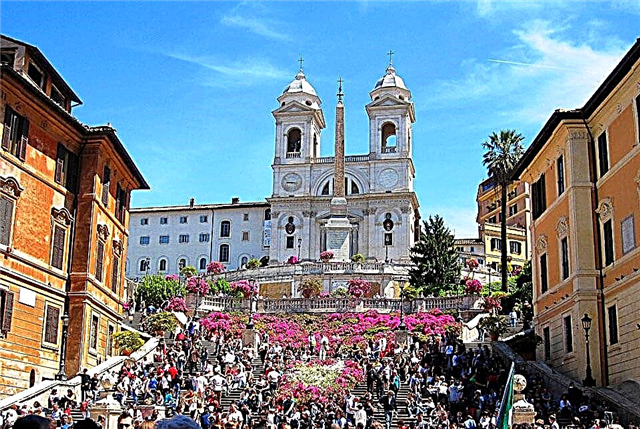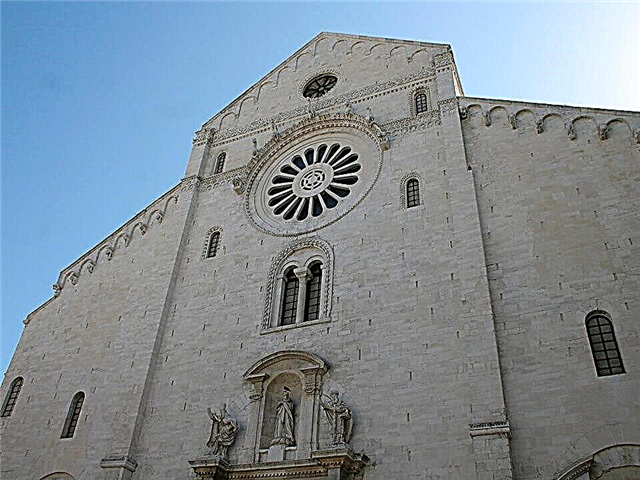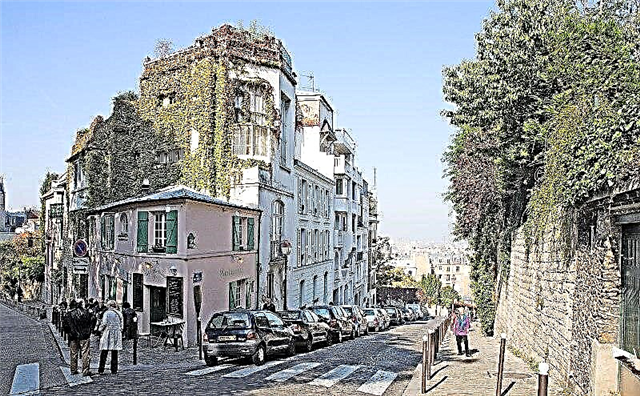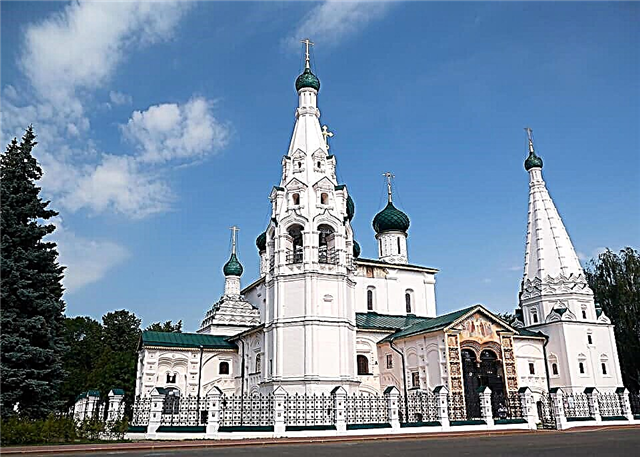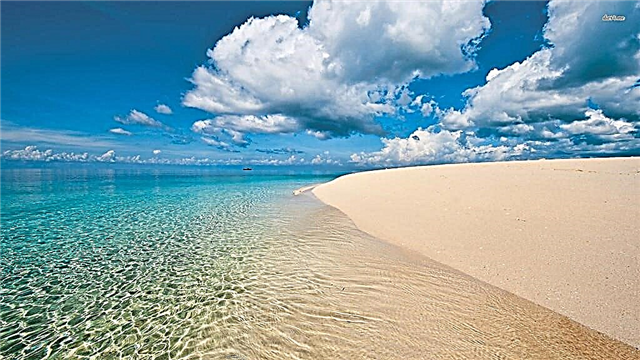The Kungur Ice Cave is distinguished from other natural monuments of the Urals by its extraordinary beauty and gigantic dimensions. It ranks 7th among the longest gypsum caves in the underground cavities of the planet and is one of the largest karst caves located in Russia. The exact age of the cave is not known, but scientists say that it is from 10 to 12 thousand years old. Today, the growth and development of underground formations continues.
What a cave looks like
An amazingly beautiful corner of the underworld is located at the Ice Mountain, which stands on the coast of the Sylva River in the Perm Region. The length of the cave is quite long - 5600 m, but only 1500 m is accessible to visitors. Of the six hundred caves scattered across the Perm Territory, Kungurskaya is recognized as the most convenient for excursions. Equipped paths on the routes, reinforced ceilings of underground halls, electricity and ventilation system - all this is created for the safety of visitors.

Cave entrance
Why is the cave called ice? In the winter months of the year, cold accumulates inside it, and this leads to the appearance of ice drifts. Most of the stalactites and stalagmites were formed here hundreds of years ago, but there are also such giant "icicles" that are "born" and melt every season.
The picturesque ice cave is rich in grottoes - there are over 45 of them. The temperature regime underground is significantly different from the temperature outside. In summer, the thermometer does not exceed -2 ° C here. In some underground cavities, the temperature is so low that in ancient times the locals used them as a refrigerator. We are talking about the Vyshka and Brillianty grottoes, where the average temperature is -17 ° C and -32 ° C, respectively.

How the ancient cave was explored
The first explorations of the cave were carried out at the beginning of the 18th century, when factories were just beginning to appear in the Ural lands. In order to get acquainted with the cave, Semyon Remezov, a well-known figure at that time, descended into it. He was the first in 1703 to draw a plan of underground voids.

Two decades later, the dungeon was examined by Vasily Tatishchev, after whom one of the grottoes was named. Struck by the grandeur of the cave, he conveyed his impressions figuratively and vividly, so that everyone would understand how unusual this dungeon was. According to him, some places looked like great chambers, while others were so narrow that one could hardly walk through them. Then Gmelin and Lepekhin, Russian scientists who arrived in the Urals as part of small scientific expeditions, descended into the cave.

Underground lake
The first paid excursions were carried out here in the 19th century. Wanting to earn money, residents of Filippovka (formerly the village was called Banny), for a fee, took tourists to the underground. Then the grandson of the traveler KT Khlebnikov - A.T. Khlebnikov in 1914 personally conducted a tour of the cave labyrinths for the princess from Of Germany Victoria von Battenberg. The study of the cave fascinated the younger Khlebnikov so much that he independently cleared its passages and arranged excursions through the bowels until the beginning of the 60s of the last century.

In 1948, a Scientific Station was opened here, and 21 years later - a local tourist bureau, which organized excursions. The emergence of these institutions was associated with an increased interest in the cave. The maximum influx of visitors came in 1980, when over 202,000 tourists went underground.
Interestingly, the entrance leading to the ground is artificial. It is a 40 m tunnel. The decision on its arrangement was made in 1937, and it was explained by the inconvenience of a natural entrance for excursions.

Due to the narrowness of the passage, frequent landslides and rapidly growing ice, it was not easy to enter the dungeon. Descriptions of some visitors have survived to this day, who worked hard and for a long time to remove the ice accumulated at the entrance.
As for the exit from the underworld, it is also an artificial tunnel. Only its length is 2.5 times longer than the tunnel at the entrance - it is 100 m.
What can be seen inside the cave

In addition to the extraordinary halls, the Ural cave is fraught with about 60 lakes communicating with Sylva. When the water rises in the river, these underground bodies of water also overflow. The largest underground lake reaches a volume of 1300 cubic meters and goes into a depth of 3 m. Various living creatures can be found in underground reservoirs - frogs and invertebrate water crustaceans Arthropoda. Other inhabitants of the dungeon are bats.

In addition to exploring the attractive underground lakes, Ice Mountain beckons tourists, hiding the archeological monument "Ermakovo settlement". According to a widespread belief, before the campaign to Siberia, Ermak's squad waited out the winter in these places. The top of the mountain is saturated with karst cavities, each of which is believed to connect with a cave. The funnels, reaching a diameter of 50 m, go to a depth of 15 m. It is interesting that on the slopes of the mountain there are plants characteristic of the steppe area.

Tourists have been admiring the beauty of the Kungur Cave since the beginning of the last century, when the first excursions began to be held in its depths. To inspect the underground, two routes were laid at one time - the "Big Ring" (1.3 km), and the "Small Ring" (1.25 km). The journey along them, accompanied by a guide, takes about 80 minutes.
On the "Big Ring", visitors to the cave pass through all the grottoes (there are 21 of them). The most comfortable and safe paths and underground cavities are concentrated on this route.

The path along the Small Ring is no less exciting. This route passes through places where human interference in the natural environment is almost negligible. The trail here has no concrete pavement, and the number of lighting systems and props is kept to a minimum. The trail from the Central grotto leads through several picturesque underground halls and through the Cross grotto takes tourists to the entrance.
In 2011, the extraordinary Permian cave was among the ten most beautiful caves in the world. The announcement of this significant event in the life of the Kungur facility was published in Forbes. It is noteworthy that of all the caves in our country, only Kungurskaya came to the top.

How are the excursions
Traveling around the cave is allowed only as part of organized excursions. You can inspect the dungeon daily from 9 am to 4 pm. The most suitable season for visiting is considered the end of winter or the beginning of spring, when the ice "vestments" of the cave reach their maximum size.
On excursions, tourists are introduced to the history of the cave and the geological reasons for its formation. But the most unusual is the 1.5-hour excursion accompanied by a laser show. In addition to the traditional walk along the underground trail, a bright laser show is organized for tourists, which reveals many of the secrets and myths of the cave.

A journey to the underworld is interesting not only for adults, but also for children. Special 1.5-hour excursions are held for them, during which little visitors are led along underground paths among bizarre stones. In addition to general, individual and children's excursions, adventure quest tours are organized in the underground kingdom, during which participants search for hidden treasures.
Attraction rating:


